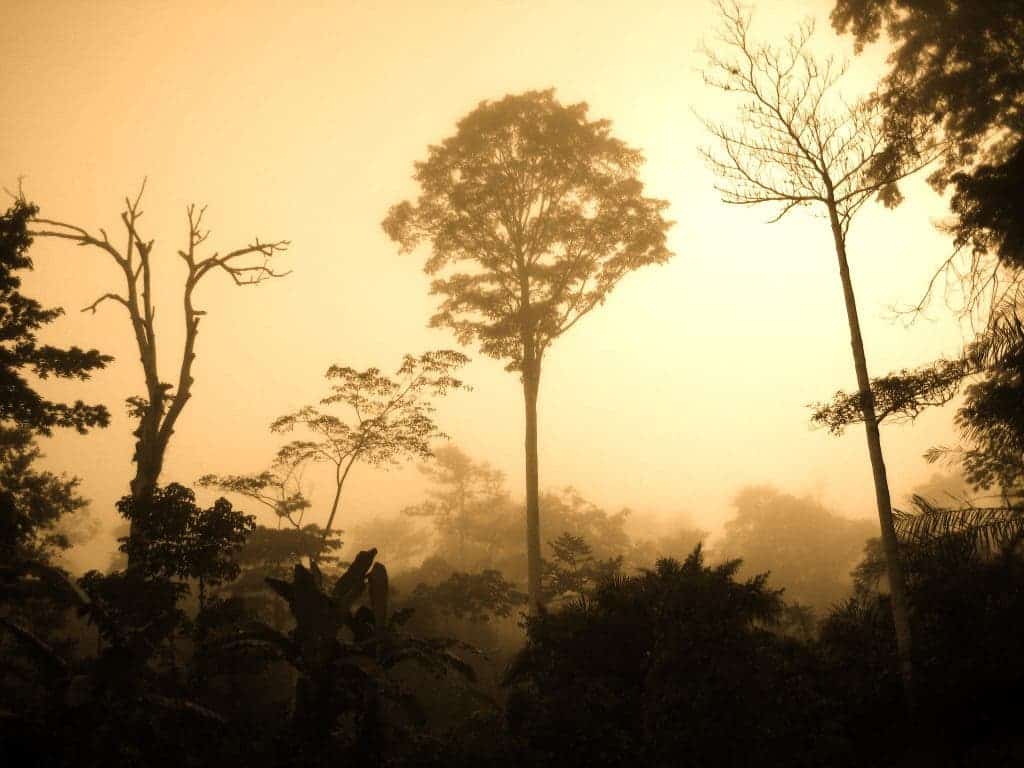Gabon, an equatorial country located at the western end of the Congo Basin rainforest, has just become the first African country to receive payment for reducing carbon emissions by protecting its rainforest. More than 90% of the country is covered by forests, which means it captures more carbon dioxide (CO2) than what it emits. Some believe this could be a pathway to getting developing nations (which have historically produced less greenhouse gas than developed nations) on board for reducing their emissions.

Gabon has received $17 million from the Central African Forest Initiative (CAFI), an organization launched in 2015 by the United Nations and backed by international donors. The payment came after independent experts verified Gabon’s results, showing a decline in the country’s emissions in 2016 and 2017, the government said. It’s not a large sum, but it can help get the ball rolling.
CAFI provides financial incentives to Central African governments to pursue economic growth without harming the vast forests that cover much of the region. While the amount received by Gabon only represents 0.1% of its annual GDP, the government sees it as an important step forward, the Forest Minister Lee White told the BBC — and potentially, a sign of what’s to come.
The government signed a 10-year deal with CAFI in 2019 through which it will receive a total of $150 million if it meets climate change targets. The tropical country committed to cut its carbon emissions in half by 2025 from 2005 levels. The funds will be used to invest in local forestry projects, improving the livelihoods of communities in Gabon.
“This is the first time an African country has been rewarded for reducing forest-related emissions at the national level,” Sveinung Rotevatn, Norway’s Minister of Environment, whose government is a major donor to CAFI, said in a statement. “The country has demonstrated that emissions reductions can be achieved in the Congo Basin Forest.”
Rainforest Foundation, which works on rainforest protection and community land rights, told the BBC that while money to protect forests is important, this payment “risks being a public relations exercise”. They pointed to data from the monitoring group Global Forest Watch, which showed that 2017 saw one of the highest rates of forest loss in Gabon since 2001.
The tropical forests of the Congo basin are the second largest in the world after those of the Amazon Basin. They cover almost 200 million hectares and span across six countries of Central Africa. Gabon has about 22 million hectares of tropical rainforests, home to emblematic species such as mandrills (Mandrillus sphinx) and forest elephants (Loxodonta cyclotis).
Gabon created a network of 13 protected forest areas in 2002, following a proposal from the World Conservation Society to the national government. National parks now cover three million hectares, or 11% of the country. Environmental organizations see this as a limited effort, as half of the country’s forests are allocated to extractive industry sectors.
About 25% of the country’s population lives in rural areas and depend on forest goods for sustaining their needs, which include timber and non-timber forest products such as bushmeat. The country’s main drivers of deforestation include agricultural expansion, timber and fuelwood extraction, and infrastructure development.









